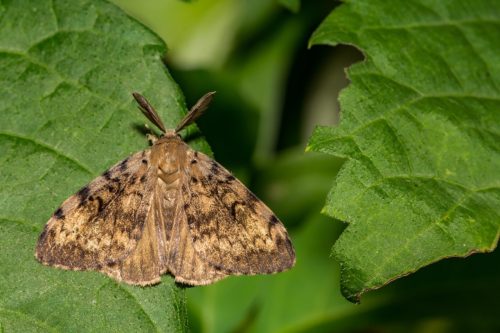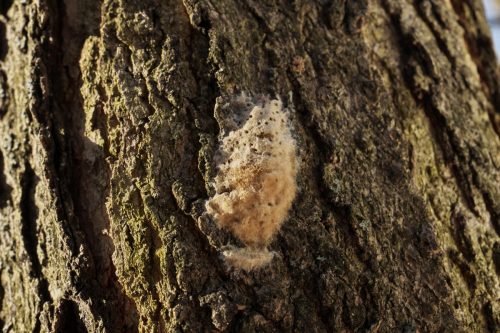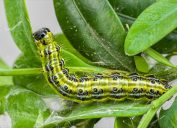If You See This on the Trees in Your Yard, Scrape It Off and Kill It Immediately
You'll need to take proactive measures to save your trees.

Trees are not just aesthetically pleasing—they also clean our air, help prevent flooding, and provide us with much needed shade on a late-summer day. With that in mind, if the trees in your yard are being threatened, odds are that you'll want to be proactive about protecting them. One thing in particular could be putting your trees in danger, and if you notice it, you'll need to take immediate action. Read on to find out what you must be vigilant about identifying.
READ THIS NEXT: If You Have This Tree in Your Yard, Kill It and Cut It Down, Experts Warn.
Invasive species are a threat to native ecosystems.

Invasive species are those that are non-native to the U.S. and likely to cause harm to the economy, environment, or human health, according to the U.S. Department of Agriculture (USDA) National Invasive Species Information Center. These can be plants, animals, or other microbes, most often introduced by human actions.
Invasive species can have serious implications for biodiversity, and even cause native species to go extinct. Recently, experts have issued warnings about the detrimental effects of invasive plants such as the Bradford pear tree and garlic mustard, as well those that you can inadvertently buy at Home Depot or your local garden center.
Now, there's an invasive insect devastating trees across the country, and experts are calling on you to help stop the spread.
A certain moth is putting your trees in danger.

The invasive spotted lanternfly has been top of mind lately, as officials in several states have asked residents to kill the bug on sight. But the spongy moth is another dangerous insect that shouldn't be overlooked, according to the USDA Animal and Plant Health Inspection Service (APHIS) and the Entomological Society of America (ESA).
The invasive moth is a defoliator, meaning it strips trees of their leaves, and it's actually "the most serious forest defoliator" in the U.S., according to Purdue University.
It was first introduced to the U.S. in 1869 in Massachusetts, and you might recognize it by its former name—the European gypsy moth. In March, the ESA changed the name, due to its use as a derogatory term for the Romani people. The new name, "spongy moth," was selected thanks to the insect's distinct "sponge-like egg masses," which the ESA is intentionally drawing attention to.
RELATED: For more up-to-date information, sign up for our daily newsletter.
The spongy moth goes through four developmental stages.

The spongy moth is predominantly found in the Northeastern region of the U.S., but it has also spread to the Midwest and Canada, according to The New York Times. Oak trees are its favorite food, but there are approximately 500 tree and plant species that will also satisfy its appetite, according to Purdue. After trees are defoliated by the spongy moth, they are able to reproduce their leaves, but if they continue to be defoliated annually, they will eventually die.
According to the ESA, when spongy moths are in the egg mass stage of their life cycle, people unknowingly transport them and effectively help the insect infest new areas. Egg masses are small clusters of 500 to 1,000 eggs, "covered with tan or buff-colored hairs," according to Purdue. In late April and early May, small black-headed caterpillars hatch from eggs, and that's when they begin gnawing on your tree's leaves. After they're done feeding, the caterpillars become pupae and then finally emerge as adult moths in mid-summer.
If you don't catch the egg masses, call pest control.

Identifying egg masses can save you and your trees some serious grief, as you can simply scrape them off and soak them in soapy water before they hatch. Unfortunately, an infestation in your backyard can be that much more difficult to control when the spongy moth enters its second developmental stage.
If you didn't check for the egg masses, you might then notice the caterpillars, and that's when you'll need to contact pest control, experts say. Insecticides like Bacillus thuringiensis, also known as Btk, can be used to treat trees, but it has to be applied when caterpillars are smaller than one inch in length. When they get bigger and more mature, caterpillars stop feeding on Btk-treated leaves, which renders the treatment ineffective.
At this point, you can take matters into your own hands to reduce the number of caterpillars feeding on your trees. Experts at Purdue recommend wrapping the tree trunk in a strip of burlap between 12 to 18 inches wide, tying it with twine or wire six inches from the top edge, and folding the cloth down. This will create a "tent-like area" that the caterpillars will hide in, and you can wear gloves or use tweezers to remove them daily. As with the egg masses, you should drop them in soapy water (using dishwashing soap) to make sure they are dead before disposing of them.





















